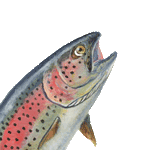|
Kaiser Schnitzel posted:Is a 400 sq ft vegetable garden way huge for one person to tend and eat from? I live alone. Last year I put in the first garden I've had in years, went with about 1000 square feet, and I'm already considering expanding. I could probably be a little more efficient in my layout, and 1/4 of that square footage was dedicated to a constant supply of corn on the cob, but 400 square feet definitely doesn't sound unreasonable.
|
|
|
|

|
| # ? May 29, 2024 19:58 |
|
Kaiser Schnitzel posted:Is a 400 sq ft vegetable garden way huge for one person to tend and eat from? It sounds like not enough! Depending how and what you plant of course.
|
|
|
|
Depends what youíre growing, but you could eat comfortably and have extra for preserving depending on your layout and what you grow. If you only do ornamental stuff then youíre limited, but the zinnias would be a nice touch. I can grow a lot of food in 250 sq ft. If you like gardening then it will be easy enough to take care of too. Easier if itís all in the same place. If youíre going for great looking though, youíll want to keep extra space and mix in flowers all over. That looks like a good hunk of lawn to pull out. Edit: See, three different answers of depends what you grow. It must be right.
|
|
|
|
Also consider fruit trees and bushes incorporated in to the landscape to give you food and privacy.
|
|
|
|
Death to all lawns. Go for it! 400 sq feet won't put you into living off your garden territory but it's a great size to learn good habits from. It's really, really easy to get really, really slack with a bigger garden. Look into square foot gardening and you'll be really surprised by how much you can grow in a smaller garden. Our last house was in a little suburban neighborhood and we always grew a few vegetables up front with tall flowers and the neighbors loved it. Compost, compost, compost is going to be key in developing good soil from a lawn. Coconut coir will help with the usually graded/stripped top soil as well.
|
|
|
|
Thanks for all the advice. My prior vegetable gardening experience has mostly been square foot gardening in a 4'x8' box or three. I've got some citrus and blueberries in the back, and we don't really reliably get enough chill hours to make alot of fruits really happy here. I'm going to keep this all annuals, except maybe an asparagus or strawberry patch and some herbs. Are strawberries at all worth it in space per yield? When I've grown them before I got half a dozen berries spread out over a few weeks (the ants seemed to get more than me) and they took up a bunch of space, but I'm also not sure I had enough plants and maybe they really need to be packed in there. I've got pretty good well drained native bottomland dirt here, but will definitely be adding compost and peat moss/pine bark to try and raise it up a little bit. I actually like most of the grass I have left and I think it's very useful as a pathway (make it the exception, not the default) in the garden, but this is my least favorite area to mow and the only place that gets full sun so I guess time to sharpen the spade and start cutting up sod. It's gonna be a job digging all that grass out. I dug the bed between it and my neighbor's house a few years ago and that was serious work. This is probably twice that size. If I'm going to do this, I'd like to go ahead and run pipe out there for a spigot in the middle so I can hook up some sort of irrigation and not have to gently caress around with hoses. We get plenty of rain here, but supplemental watering always seems to help-any suggestions on easy/cheap/decent irrigation? I've never really fooled around with it aside from PVC with a bunch of little holes drilled in it.
|
|
|
|
Strawberries here in NC are really an all-in kind of decision. I've never been successful with them, either birds or bugs or weather has always zapped them. The commercial growers here heavily amend soil with sand and just focus on strawberries. I just don't see it like a garden kind of plant but maybe I'm just scarred.
|
|
|
|
mischief posted:Strawberries here in NC are really an all-in kind of decision. I've never been successful with them, either birds or bugs or weather has always zapped them. The commercial growers here heavily amend soil with sand and just focus on strawberries. I just don't see it like a garden kind of plant but maybe I'm just scarred. You can always do strawberries in a container! They make special strawberry pots if you want to get fancy about it.
|
|
|
|
I like container strawberries. Otherwise the pillbugs get them. And they look nice in a pot.
|
|
|
|
Thanks for the recommendations on the One Yard Revolution youtube channel. Really learned a lot watching some of their videos. It was the final push I needed to deciding to do some raised bed gardens this year. Once the snow clears I'll get to work making some. Is the book that gets talked about here all the time called Square Foot Gardening? I want to try and maximize our vegetable garden this year and need to learn as much as I can. I'm hoping the raised beds help up with yields this year.
|
|
|
|
BaseballPCHiker posted:Thanks for the recommendations on the One Yard Revolution youtube channel. Really learned a lot watching some of their videos. It was the final push I needed to deciding to do some raised bed gardens this year. Once the snow clears I'll get to work making some. Yup, by Mel Bartholomew - totally worth it. Summary - plant things closer together to reduce weeding and watering I also like Grow More Vegetables by John Jeavons This could be helpful for some folks 
Dukket fucked around with this message at 16:05 on Mar 2, 2020 |
|
|
|
Bought that SFG book. I like the idea, seems interesting. The most important thing I got out of the book is that I need to build raised garden beds this spring.
|
|
|
|
BaseballPCHiker posted:Thanks for the recommendations on the One Yard Revolution youtube channel. Really learned a lot watching some of their videos. It was the final push I needed to deciding to do some raised bed gardens this year. Once the snow clears I'll get to work making some. That's not to wave you off of the book or anything, just keep in mind that there's more to raised bed gardening than the One True Path of SFG.
|
|
|
|
Raised beds are definitely the easiest way to get good soil quickly. Plus the dimensions will help you down the road when you start getting too know-it-all and plant stuff all willy nilly and have a terrible season because you didn't space stuff out correctly. I've definitely never done that.
|
|
|
|
SubG posted:Raised beds own but SFG is basically the ultra-orthodox version of raised bed gardening. Like SFG has a bunch of nonsense like if you're not using exactly this mulch and planting in precisely this pattern and if you haven't literally subdivided your raised bed into a 1' square grid then You Are Doing It Wrong. That kind of thing. Huh, thats not how I read it.
|
|
|
|
Dukket posted:Huh, thats not how I read it. Mel Bartholomew posted:We often say that if your garden box doesnít have a grid, its not a Square Foot Garden. Of course, we get some people who object to that, donít want to conform, and we even have some mavericks that say, ďI donít use a grid. I donít need it. I can still estimate where things go.Ē But they miss all the fine points of why you need a grid. If nothing else, it makes the job of gardening so much easier. If you had to clean all the windows in your house, that would be a huge chore and you may keep putting it off, thinking that youíll never get it done. But if you adopt the attitude of, ďAll Iím going to do is one window,Ē get out the supplies and in 5 to 10 minutes itís done. Once that window is done, you think, ďWell that didnít take long,Ē it looks so nice and you do just one more. Pretty soon youíve done the whole room, but itís time to quit. And you think back, Ē That wasnít very hard, that didnít take so long.Ē And look how nice it all looks. Thereafter, you can do the whole house in no time at all if you just take it a little at a time. Theres a lot of things in life that are just that way. This is just one of the reasons I insist if youíre going to call your garden a Square Foot Garden you got to have a grid. And not a string grid, with rusty nails holding it tight. Weíve been into that story many times. What I want to concentrate on here, is what fun comparisons can we make to answer the question, ďA box garden without a grid is likeĖĒ Here are some great answers weíve gotten from people and a few more Iíve thought of:
|
|
|
|
SubG posted:Mel Bartholomew, the guy who coined the term and wrote the book, has definite feelings about what does and does not count as SFG. This is from the Without a Grid section of the Beginner's Guide on his official SFG page: It's a good book, and I review it every season when I'm planning my garden, but Mel is 100% and engineer, so he is gonna suck the fun out of everything you do.
|
|
|
|
bengy81 posted:It's a good book, and I review it every season when I'm planning my garden, but Mel is 100% and engineer, so he is gonna suck the fun out of everything you do.
|
|
|
|
Iíll say itís good at some things, and far too rigid in places it doesnít need to be. Calling it square foot gardening is probably a poor choice as most gardeners will think in those terms. As in, I have 35 sq ft in my raised bed. I often have spacing that would be done in sq ft. But I donít use that soil blend in my raised beds, and I think the spacing just isnít done well for some varieties of plants (chile peppers). I also donít like the soil mix, but it would work to grow a lot of different plants. Itís just impractical for me and an expense I donít see as more useful than just working on a good soil structure. But, it has a lot of good information for people who need that sort of information. And it contains some good reference info. I think the main criticism of it is a fair one though, and had he called it almost anything else, that criticism would just be heís too specific about about some things and it wouldnít get into the pedantic circuits as well.
|
|
|
|
That's funny, I guess I just skipped right over all that and heard "plant poo poo closer together than you've been traditionally told to, here's some recommendations"
|
|
|
|
Which is good, because thatís the best part of the book. Unless youíre doing rows and rows of sweet corn or something, you probably can fit more plants in than most people would expect. I ended up putting plants much closer together last year after thinking about the space more because my mother brought up SFG. A few years ago I wouldnít have dreamed of fitting all those plants into the one place. Turns out 35 sq ft is really quite large when you use it right. Also really helps with not having to pull as many weeds because of the shade, but makes succession planting more difficult for the same reason.
|
|
|
|
Jhet posted:Which is good, because thatís the best part of the book. Unless youíre doing rows and rows of sweet corn or something, you probably can fit more plants in than most people would expect. I ended up putting plants much closer together last year after thinking about the space more because my mother brought up SFG. A few years ago I wouldnít have dreamed of fitting all those plants into the one place. Turns out 35 sq ft is really quite large when you use it right. What kind of spacing do you give your peppers?
|
|
|
|
You do have to be careful with dense plantings, eg prune for airflow
|
|
|
|
Harry Potter on Ice posted:What kind of spacing do you give your peppers? I have a 5'x7' raised bed. It had 4 rows last year with 5 different varieties. The Caribbean Red and Carolina Reaper plants are more bushy, especially because I top them when young, so I only put 14 plants in that row. The rows are about 10-12" apart, with about 4" on the outside on each side. The fake Datil had 14 plants too. The Cayenne had 17 or 18, and the Korean Dark Green had about 15-16. I made sure to prune them up off the ground by about 4-6", and by July there was plenty of air flowing through the plants. Eventually the cayenne and Korean Dark Green got heavy and started to lean. I should have given them a line to lean on. I'm tempted to try to fit more in a similar space, but I think it would decrease the yield as the plants fought for sun. They'd get direct sun from about 7am until 7pm depending on the month. Eventually the tomatoes started to cast a shadow, but it was already August and they needed to start fruiting, so it worked to my advantage.
|
|
|
|
Harry Potter on Ice posted:What kind of spacing do you give your peppers? What I usually end up doing is a sort of checkerboard alternation with about a 12"/30 cm spacing between the more well-behaved peppers (like the annuums) and something like Thai basil that also likes a little but not too much shade. The bushier peppers like the habs and so on (and other guys that get bigger, like bell peppers) I usually either devote a 2'x2' block to, or plant alongside greens or something that won't give a poo poo about having a bushy pepper plant over it (I get a lot of volunteer epazote that'll happily grow underfoot and then through pepper foliage).
|
|
|
|
SubG posted:In my experience you can shove C. annuum peppers like Thai birds and arboles pretty close together, as they tend to be mostly upright and grow from a central stem. C. chinense cultivars like habs and bhuts are a lot more variable. My habs usually end up bushing out a lot unless actively pruned, while a lot of the super hots like reapers or whatever tend to spend most of the season being pretty twiggy and then bush out only real late in the season when they're unlikely to overshade anything nearby. What sort of yields do you get from the 2'x2' habs? I had 7 of the Caribbean Reds - which are similar in size and shape - in 1'x 3.5' and got about 3kg of fruit, or a bit under 0.5kg per plant. It was a great yield for such small and empty fruits.
|
|
|
|
I think I've decided to start digging up my giant front yard veg. garden this weekend. Last few beds I've put in I double dug, and things have done quite well in them but its, uh, hard-rear end work. If my soil is half decent is it really worth it? Or is the lots of work today worth the 'very good garden' for the rest of forever?
|
|
|
|
Kaiser Schnitzel posted:I think I've decided to start digging up my giant front yard veg. garden this weekend. Last few beds I've put in I double dug, and things have done quite well in them but its, uh, hard-rear end work. If my soil is half decent is it really worth it? Or is the lots of work today worth the 'very good garden' for the rest of forever? First off, dial before you dig! it's 811 in my area, but it could be something else in yours. You don't want to be the rear end in a top hat who cut the cable/gas line! It helps if you have the right tools. If you have the money you could always rent a big gently caress off tiller if you have the vehicle for it. I've had a lot of luck with a grub hoe for tearing up sod for large flower beds - I dug up a 6' x 13' bed after work. It's a good workout but so much faster than with a shovel. The grub hoe can also be used as a trenching tool if you decide to keep going with the double digging. Also make sure you're watering the area you want to dig up the day before or so (or after a rain), this helps out a great deal.
|
|
|
|
SubG posted:In my experience you can shove C. annuum peppers like Thai birds and arboles pretty close together, as they tend to be mostly upright and grow from a central stem. Chile Japones would be another candidate, and the $1 dried peppers from the Hispanic food aisle have a whole lot of seeds in them. The aforementioned paper towel germination method works well for this task since the seeds are so plentiful. Similarly, if anyone wants to grow common habeneros this season, buy one fresh pepper at the store for ten cents, let the seeds dry out for a couple of days in a coffee filter on your kitchen counter, then use as you would seeds from a packet. It works with other peppers also, but I did this a few days ago and a single habenero didn't even register on the store's scale so the cashier just gave it to me. I'm not trying to brag about saving a dime, just encouraging y'all to experiment with grocery store seeds because sometimes you literally have nothing to lose.
|
|
|
|
Kaiser Schnitzel posted:I think I've decided to start digging up my giant front yard veg. garden this weekend. Last few beds I've put in I double dug, and things have done quite well in them but its, uh, hard-rear end work. If my soil is half decent is it really worth it? Or is the lots of work today worth the 'very good garden' for the rest of forever? Probably depends on how dense your native soil is and what you want to grow. Our soil is quite sandy and I don't see any fertility differences after several years between the beds that were double dug, rototilled, or just smothered in cardboard with compost and soil dumped on top. For the effort the soil in the smother-and-dump bed is amazing after just a year. I might do that more in the future. The only issue was root crops. I had a hell of a time digging the gobo (edible root burdock) out of that bed as the roots went through the cardboard layer and into the undisturbed native soil. Had a similar problem with one variety of sweetpotato but it was in a 10" raised bed where my wife had double dug the native soil before we built the sides of the bed and filled it. Some varieties of sweets go horizontal but this one really liked vertical and took full advantage of the deep soil.
|
|
|
|
Jhet posted:I have a 5'x7' raised bed. It had 4 rows last year with 5 different varieties. The Caribbean Red and Carolina Reaper plants are more bushy, especially because I top them when young, so I only put 14 plants in that row. The rows are about 10-12" apart, with about 4" on the outside on each side. The fake Datil had 14 plants too. The Cayenne had 17 or 18, and the Korean Dark Green had about 15-16. I made sure to prune them up off the ground by about 4-6", and by July there was plenty of air flowing through the plants. Eventually the cayenne and Korean Dark Green got heavy and started to lean. I should have given them a line to lean on. I'm tempted to try to fit more in a similar space, but I think it would decrease the yield as the plants fought for sun. They'd get direct sun from about 7am until 7pm depending on the month. Eventually the tomatoes started to cast a shadow, but it was already August and they needed to start fruiting, so it worked to my advantage. SubG posted:In my experience you can shove C. annuum peppers like Thai birds and arboles pretty close together, as they tend to be mostly upright and grow from a central stem. C. chinense cultivars like habs and bhuts are a lot more variable. My habs usually end up bushing out a lot unless actively pruned, while a lot of the super hots like reapers or whatever tend to spend most of the season being pretty twiggy and then bush out only real late in the season when they're unlikely to overshade anything nearby. Yea I did 18" for everything this year and I think I could have gotten away with 12". I'm not doing hab's this year even though its my favorite little plant, its either not long enough of a growing season here or not hot enough or both. Thanks!
|
|
|
|
Harry Potter on Ice posted:Yea I did 18" for everything this year and I think I could have gotten away with 12". I'm not doing hab's this year even though its my favorite little plant, its either not long enough of a growing season here or not hot enough or both. Thanks! Habs will grow well in a lot of places. It just helps if you start them indoors last month and then make sure you give them lots of nutrition when transplanting. Add some blood meal and fish fertilizer to the bottom of the holes and they seem to just take off. Even with the below average June, they had great root systems last year and they were very nice sizes by mid-July. Itís as much the short days that sent mine to dormant as the cooler temps, so maybe if youíre in Edmonton or something that could be tough. Never give up on the hot chile peppers. Thatís probably going on my grave stone.
|
|
|
|
Jhet posted:What sort of yields do you get from the 2'x2' habs? I had 7 of the Caribbean Reds - which are similar in size and shape - in 1'x 3.5' and got about 3kg of fruit, or a bit under 0.5kg per plant. It was a great yield for such small and empty fruits. Jhet posted:Habs will grow well in a lot of places. It just helps if you start them indoors last month and then make sure you give them lots of nutrition when transplanting. Add some blood meal and fish fertilizer to the bottom of the holes and they seem to just take off. Even with the below average June, they had great root systems last year and they were very nice sizes by mid-July. It’s as much the short days that sent mine to dormant as the cooler temps, so maybe if you’re in Edmonton or something that could be tough. I think watering might be what trips a lot of people up. Most hot peppers want to get watered regularly, but don't like damp soil. Putting them in raised beds for better drainage helps with this, but what I usually aim for is watering around every other day, and finger-testing the soil near the root ball in between to make sure it's not staying to wet between waterings.
|
|
|
|
Solkanar512 posted:First off, dial before you dig! it's 811 in my area, but it could be something else in yours. You don't want to be the rear end in a top hat who cut the cable/gas line! https://www.amazon.com/Rogue-Prohoe-Field-Hoes-Cotton/dp/B008I6TQRQ?ref_=ast_bbp_dp Last beds I put in I basically used it like a tiller and it was a lot easier than fighting with a finicky internal combustion engine. Hexigrammus posted:Probably depends on how dense your native soil is and what you want to grow. Our soil is quite sandy and I don't see any fertility differences after several years between the beds that were double dug, rototilled, or just smothered in cardboard with compost and soil dumped on top.
|
|
|
|
One Weird Trick Backs HATE! Got 3/4 of the grass removed. Iíll finish up tomorrow and hopefully start amending the soil. Itís too late to start seeds for a lot of summer/spring stuff here so Iím stuck with whatever the garden centers have, at least for tomatoes/eggplants/peppers. For stuff like chard and beets, is directly sowing them best?
|
|
|
|
Chard and beets both direct sow better than transplant. Just watch your spacing with both, you'll almost definitely have to thin at some point to get healthy plants. I'm not a fan of chard but home grown beets are up there with home grown tomatoes for showing people the difference between big farm and home made produce. There are some great varieties that taste incredible and look phenomenal on the plate to boot.
|
|
|
|
Hexigrammus posted:If you have the acid soil they like blueberries are quite ornamental. Some varieties have beautiful red bark after they drop their leaves, others are evergreen and hold their foliage all year. I'm going to try to find a Perpetua this year - it's evergreen and produces two crops of berries.  Perpetua is decidedly not evergreen. If you want an evergreen shrub, get a southern highbush blueberry. Some cultivars like Sharpblue have multiple waves of fruit, too.
|
|
|
|
Growing radishes in between rows of beetroot, good or bad idea?
|
|
|
|
Probably fine for the first planting of the year, probably get shaded out on succession plantings.
|
|
|
|

|
| # ? May 29, 2024 19:58 |
|
Rutgers has made a new variety of grape tomato! https://nj1015.com/rutgers-creates-tomato-with-unique-color-to-honor-nj-legacy-of-tasty-tomatoes/ Want! I was just in their school farm store on Friday (got some goat and pork). What perfect little plants for the patio
|
|
|

























